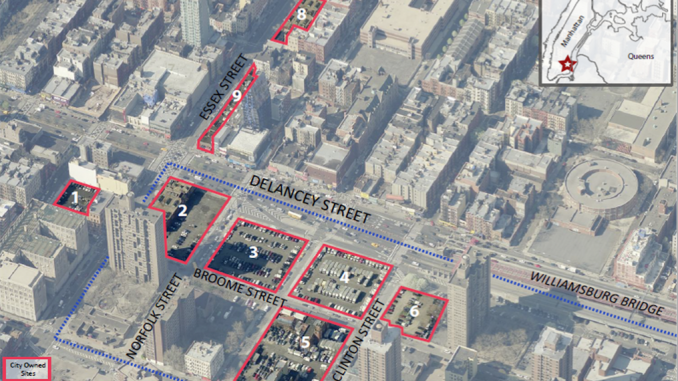
Despite humble beginnings, managing principal of BFC Partners Don Capoccia continues to break ground in urban development, which is spearheading the firm’s focus on constructing affordable housing in emerging neighborhoods. BFC Partners is currently working on the second largest project underway in New York City, second to Hudson Yards, Essex Crossing.
BFC Partners was the first developer in New York City to mix low and middle-income restricted apartments with market-rate rentals, according to their website. Capoccia was also a founding member in 1998 of the New York State Affordable Housing Association which works to increase affordable housing programs and subsidies.
On Wednesday, Feb. 28, President Donald P. Christian, Special Events and Sponsorships Program Director Lisa Sandick and Vice President for Development and Alumni Relations Erica Marks chaperoned a group of eight students to attend a roundtable event with Capoccia and tour one of the construction sites for the project.
“The President’s Roundtable events bring successful alumni and other supporters of SUNY New Paltz together with students to help them gain important career and life guidance. These inspiring and informative speakers share success stories that are critical to the learning and career preparation of current students,” said Christian.
Capoccia was the first in his family to go to college after his father told him that the family construction business, was not for him. He went to the University of Buffalo, transferred to Arizona State and then returned to Buffalo to obtain a degree in urban affairs after his parents told him that they would only allow him one more year to complete his undergraduate education.
A year later, Capoccia went on to earn his masters in urban planning from Hunter College; a rare degree in public education.
“If it wasn’t for public universities, I never would have gotten the education that I got,” he said. “We’re all very lucky to have these universities and we all benefit in ways that we wouldn’t be able to if they weren’t there and New York has one of the biggest public university systems.”
Capoccia bought his first property for one dollar in 1979, also vacant property in the city. Since 1980, he had his eyes on the sites for Essex Crossing since and is finally investing $1.5 billion on the site.
“I didn’t know what I wanted, but I knew I wanted something,” he said. “I knew I was on a path, I didn’t know where I was going to go but I just kept my eyes on the road and just kept going.”
Essex Crossing will include 1,100 housing units, 50 percent of which will qualify as affordable housing.
“I believe people in my industry have an obligation to do this. The price of living in a city is that you have to leave the city better than you found it,” Capoccia said. “You can’t live in a city and not contribute; the city gives you a lot and you have to give back.”
In addition to housing units, Essex Crossing will provide 600,000 square feet of retail and office property, not including the low line, which will be one of the largest urban markets in the world and will be connected by underground tunnels.
“You have to give people an idea they don’t expect,” Capoccia said. “You have to make people wonder, is this possible?”
Students who particpeted in the rount table were impressed and inspired.
“Upon meeting Mr. Capoccia, I was quick to realize that in order to accomplish a task of any magnitude, a unique vision must first be developed,” said fourth-year international business and marketing major Abdelrahman Barqawi. “These visions can be developed from the knowledge of our past experiences. In my opinion, this hints to a strong correlation between meaningful work and ideas of grandeur.”
Construction began about three years ago in 2015 and is centered in the Lower East Side of Manhattan among some of the most active neighborhoods in New York City. The remaining three phase project is expected to be completed in another four-to-five years.
Although Capoccia did not grow up surrounded by experience, he attributes his success both to luck and some essential characteristics forged out of necessity. These characteristics include determination, problem-solving and resourcefulness.
“You’re better off making the wrong decision today than making the right decision three weeks from now,” he said. “Timing is everything in this industry and momentum is everything. You have to keep moving forward, you will make wrong decisions but you have to keep the momentum going… you have to clear the obstacle.”
